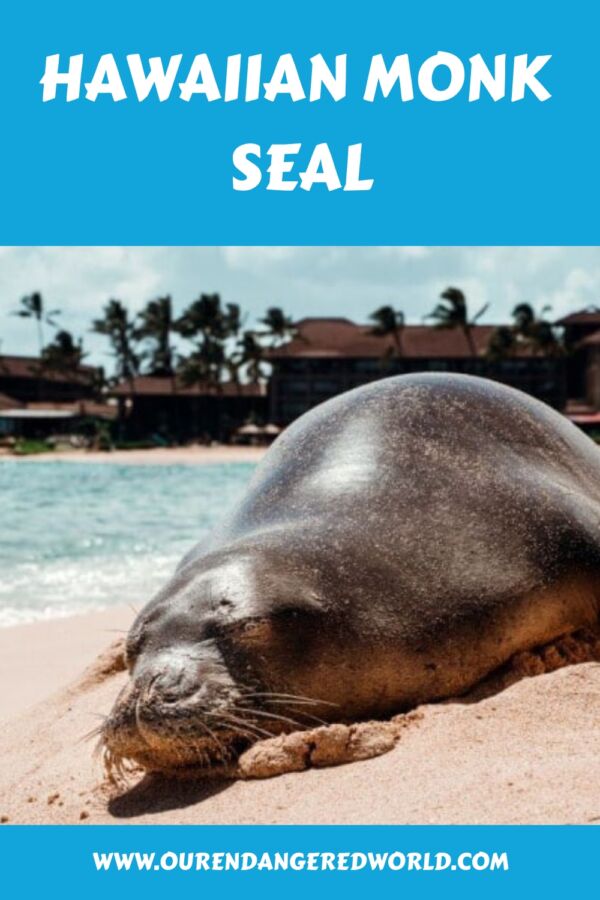Hawaiian monk seals are one of the Hawaiian islands’ most iconic animals. This species conservation is a top priority and it is estimated that there are less than 1,200 individuals left in the wild. With these beautiful animals facing extinction soon, we wanted to shed some light on what you need to know about them and how they came to be at such high risk of extinction.
Hawaiian Monk Seals can weigh up to 400 pounds and measure up to eight feet in length, making them the largest of all the world’s eared seals. They spend their days lounging on beaches or in shallow water nearshore with just their heads exposed while they wait for prey like octopus and squid.
- Status: Critically endangered
- Known as: Hawaiian Monk Seal
- Estimated numbers left in the wild: 1,100.
Description
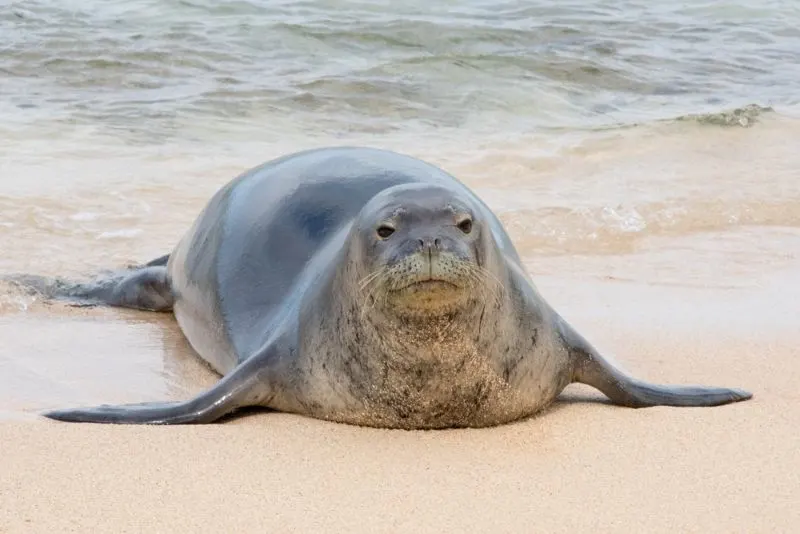
The Hawaiian monk seal is one of just three species – one probably extinct – that lives in tropical waters. This animal is named for its cowl-like skin folds on the head, as well as its solitary habits.
Monk seals are about 2.3 meters long and weigh 225 to 275 kilograms. They are earless seals with no external ears and are covered in dark grey fur molted yearly.
Hawaiian monk seals spend a lot of time in the water, partly thanks to the mild temperatures of the local seas. They forage through the nearby coral reefs, eating spiny lobsters as one of their major dietary items and preying on octopuses, eels, and fish.
When in need of rest, or when a storm is approaching, they return to the beach and haul out onto dry land. In the case of a threatening storm, they may take shelter in the foliage growing directly behind the beach, highly unusual behavior for a seal.
Breeding is problematic for Hawaiian monk seals because there are too many males, which translates into sexual aggression and possible killing of females by gangs of amorous males. Furthermore, the female monk seal does not leave her pup to feed during the six weeks until the pup is weaned.
This causes massive weight loss and weakens the female, leaving her vulnerable to sharks or illness once she returns to the sea to feed. The maximum life expectancy is probably 30 years.
See Related: Andean Flamingo
Location
The Hawaiian monk seal is a rare tropical seal found only in the northern Hawaiian Islands and the coral reefs nearby, which provide it with a rich food source.
About the Hawaiian Monk Seal
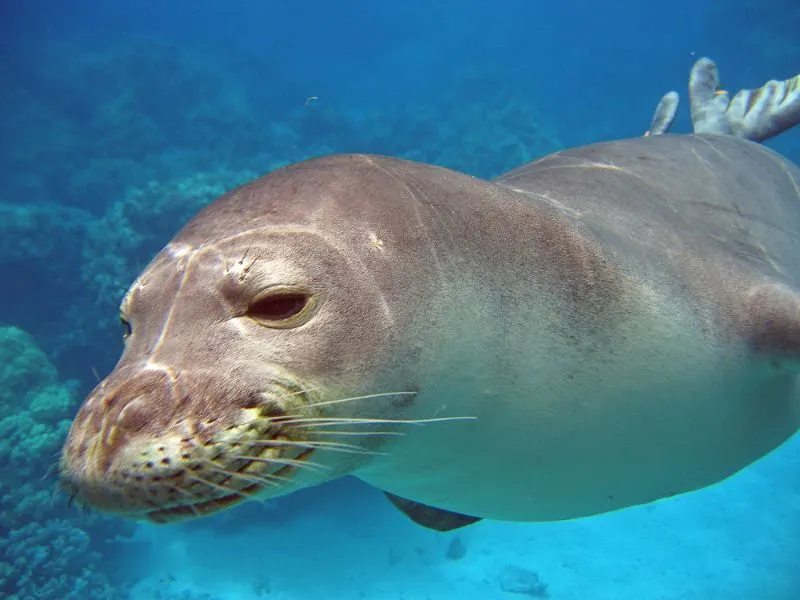
The Hawaiian Monk Seal is a seal that is only found in the Hawaiian Islands. It can weigh up to 400 pounds and grow up to six feet long. It spends most of its time in shallow water, not deeper than 100 meters.
These species may look for food in the ocean or in the water. They might eat shrimp, squid, octopus, eels, salmon and rockfish.
It has a gestation period of nine months and usually have one pup at a time. It spends most of the day sleeping in caves or dense vegetation. It is a solitary animal, except for mothers and their pups.
Hawaiian Monk Seals used to be hunted for their meat, oil and sealskin. They are now endangered because of human activities like fishing nets, marine debris, commercial hunting and disease. There are about 1,400 Hawaiian Monk Seals left in the world. They are protected by laws and they are endangered.
Hawaiian Monk Seal is one of the Hawaiian islands’ most iconic animals
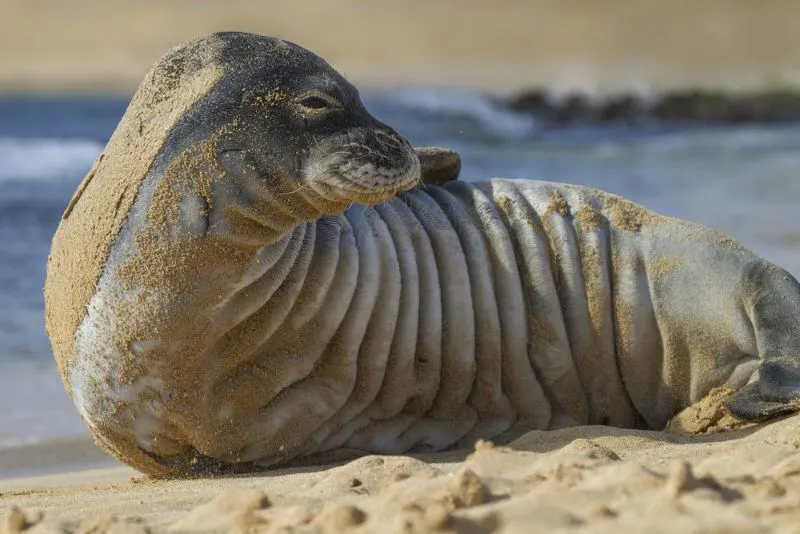
The Hawaiian Monk Seal is one of the Hawaiian Islands’ most iconic animals. Hawaiian monk seals are known for their furry belly and round face, which they use to bob in the water.
Hawaiian monk seals are endemic to Hawaiian Islands, meaning that they can only be found in Hawaii. They are one of the rarest seal species in Hawaiian oceans and came close to extinction.
This species is endangered, but has made a comeback since the 1970s due to conservation efforts such as captive breeding programs and safe havens for Hawaiian Monk Seals.
Over 5,000 Hawaiian Monk Seal live throughout Hawaiian waters. Its habitats range from Hawaiian waters, sand bars, coral reefs, and shallow lagoons.
These species preys on fish like eels, squid, mackerels, jacks, groupers , octopuses and small sharks. They are solitary animals that only come together to mate or when females have pups.
Hawaiian Monk Seals live in shallow water
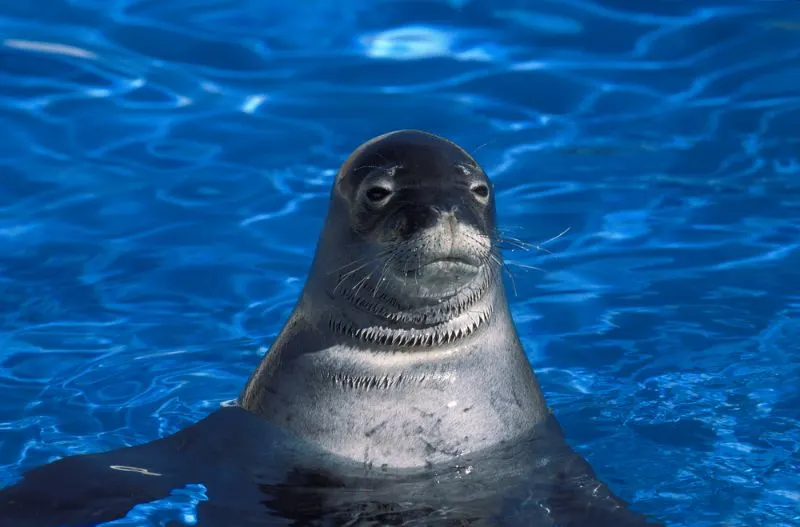
Hawaiian monk seals spend the majority of their time on beaches or in shallow water. They can occasionally be seen in Hawaiian waters. It is one of the three distinct species of monk seals, and they have little DNA in common with other types.
Hawaiian Monk Seals are very territorial, they will often haul out on the same beach if that is their own territory. They eat fish, octopus and eels which is why they tend to live in shallow water or near reefs so that they can find food easily.
Hawaiian monk seal conservation is a top priority
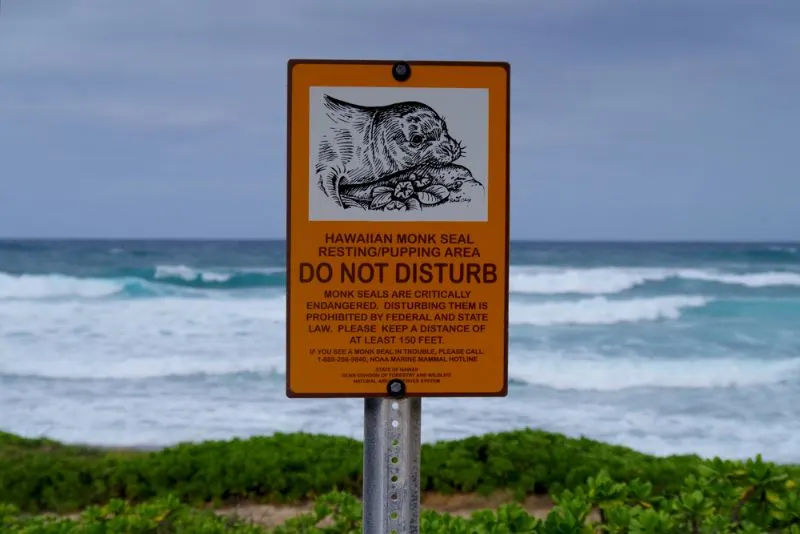
Hawaiian monk seal conservation is a top priority. They are not endangered but they are threatened because there is habitat loss due to human development, coastal dredging, and increased numbers of incidents with Hawaiian monk seals entangled in fishing nets.
These species are also affected by tourism. Hawaiian monk seals and humans can meet on beaches where seals congregate. Mothers often leave their pups unattended to rest. Frequently, Hawaiian monk seal resting spots are nearby human activities such as surfing or fishing. Since they associate so closely with people, they may be at risk of attacks from humans because Hawaii is the only place they inhabit.
Hawaiian Monk Seal Foundation is working to conserve these beautiful creatures by protecting their habitat and educating humans on how to keep safe when they are in contact with their pups.
The Hawaiian Monk Seal Association also concentrates on conservation efforts. The Hawaiian Monk Seal Research Program is responsible for much of this species research and conservation, including providing training to Hawaiian monk seal response teams.
The Hawaiian Monk Seal Recovery Team is also involved in its conservation efforts. This team is a group of scientists that plan the species recovery and work towards their de-listing from the endangered species list.
See Related: Environmental Organizations in South America
Conservation
Threats
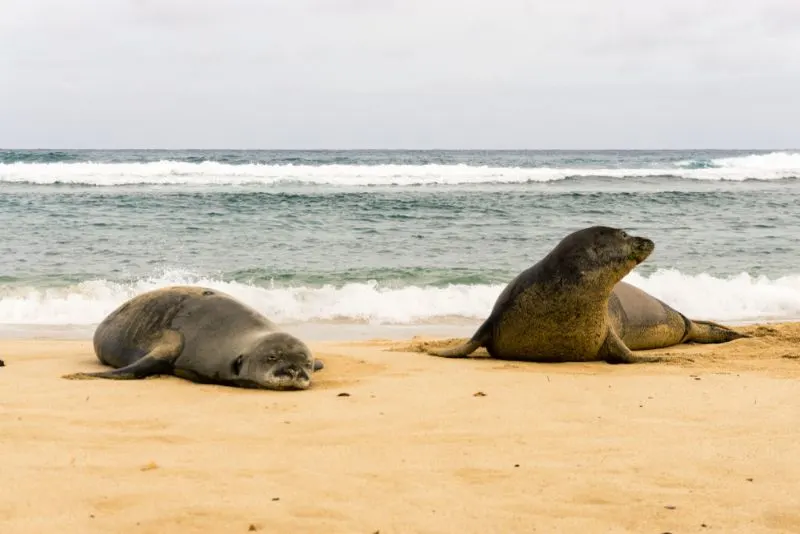
Humans are one of the Hawaiian monk seal’s biggest threats, with two main clusters of hunting occurring in the 19th century (when whaling vessels devastated any animal populations easy to reach from the water) and again during the Second World War, when the American Navy hunted these animals for food.
Hunting is no longer a major hazard, but human disturbance can drive seals out of valuable habitats even if the disturbance is limited.
Many secondary threats are also taking a toll on Hawaiian monk seals, entanglement in fishing nets, or marine debris heading the list.
Toxoplasmosis from cat-dropping run-off is a new danger that has killed several seals. A shortage of females means that many males often try to mate with a female at one time, possibly killing her in the process. Finally, many of the natural prey items of these seals have been overfished, leading to starvation, especially among youngsters.
See Related: Endangered Species in Oklahoma
Conservation efforts
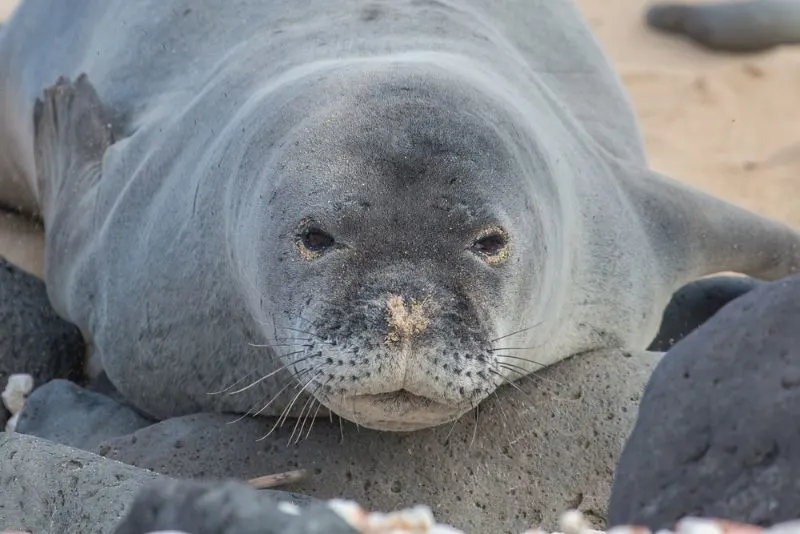
The Hawaiian monk seal is the subject of a concentrated conservation effort by the United States government and various environmental groups. The seals and the coral reefs they depend on for food are protected by one of the world’s largest marine reserves.
Further efforts include raising the number of females by isolating and raising female pups in special areas where they are given adequate food and kept safe from disturbance or “mobbing,” as well as protective care for undernourished female pups.
Additional methods of conserving the species are planned, including vaccination, feeding, relocation to other Hawaiian islands, and even drugging of males to lower their aggression and prevent them from killing females.
See Related: Save the Manatee Club
Organizations
Monk Seal Foundation

The Monk Seal Foundation focuses on scientific education, protection, and recovery programs to help the Hawaiian Monk Seal to survive in the wild and provide a sanctuary for injured seals.
Conclusion
Hawaiian monk seals are an endangered species. Despite their Hawaiian name, these rare tropical seals only survive in the northern Hawaiian Islands and the surrounding coral reefs. This creature is a popular attraction for tourists since they may be seen sunbathing on beaches or napping underwater in caves (however, this behavior has decreased owing to pollution).
Although they are not endangered, these creatures have few natural predators save for sharks; nevertheless, humans represent a variety of hazards, including hunting, fishing nets, and marine litter containing toxins that commonly kill them when accidentally ingested.
Females are also frequently attacked by other males. Furthermore, due to an abundance of males for females, there is a danger of sexual aggression and possible female deaths at the hands of gangs of amorous males during the breeding season. Monk seals often stay with their baby for 6 weeks after birth. They go to the ocean and feed, but then they come back to nurse their baby. This is a long time because the baby becomes defenseless against sharks or getting sick.
The world’s largest marine reserve protects the Hawaiian monk seals, which are a kind of animal. Many people are working hard to prevent this species from disappearing.
FAQ
What Hawaiian Monk Seal is endangered?
Hawaiian Monk Seal is an endangered marine mammal. It is a rare seal that can be found in the Hawaiian Islands. They are noted for their dark coloring and limited size, often reaching only up to five feet in length.
The Hawaiian monk seal is one of the most endangered animals in the world, with fewer than 1,300 seals currently living on earth today. As human populations have grown over the years, many of these seals have been hunted for their meat or oil in order to keep people fed in Hawaii during difficult years when resources were scarce.
Although they are not officially considered extinct yet by any means, if global trends continue then it will not be long before this incredible species has disappeared completely from our planet.
What organizations work to conserve Hawaiian Monk seals?
There are non-governmental organizations that work to conserve Hawaiian Monk seals. Some of the more well-known organizations dedicated to this species conservation include Born Free USA, Hawaiian Islands Humpback Whale National Marine Sanctuary Association, Hawaiian Monk Seal Research Program at Oregon State University and The Marine Mammal Center.
How do Hawaiian monk seals eat/swim/etc.?
Hawaiian Monk Seals eat fish, octopus and squid. They also eat eggs and smaller pups! They swim by moving their front flippers together to provide movement and thrust forward while their hind quarters and tail create a backward motion. These species communicate during breeding season through “clacking” of teeth, growling, barks or hisses. Members of the species are endangered with only 1,400 remaining in the world.
There are Hawaiian monk seal pupping sites on Kauai island that are currently being threatened by people traveling to the area not knowing about the Hawaiian monk seal presence there . Monfort is working hard to protect these pupping sites because they know without them it will be impossible for Hawaiian monk seals to continue their existence.
Related Resources
- Ways to Sae Animals Facing Extinction
- Best Posters on Saving Earth
- Environmental Organizations in Europe

